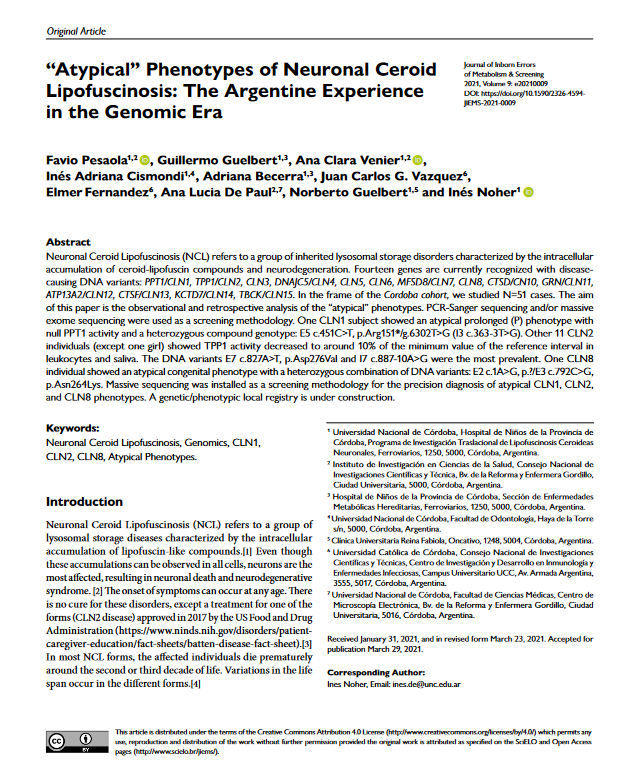"Atypical" phenotypes of neuronal ceroid lipofuscinosis: the Argentine experience in the genomic era
Licencia: Creative Commons (by)
Autor(es): Pesaola, Favio; [et al.]
Neuronal Ceroid Lipofuscinosis (NCL) refers to a group of inherited lysosomal storage disorders characterized by the intracellular accumulation of ceroid-lipofuscin compounds and neurodegeneration. Fourteen genes are currently recognized with disease-causing DNA variants: PPT1/CLN1, TPP1/CLN2, CLN3, DNAJC5/CLN4, CLN5, CLN6, MFSD8/CLN7, CLN8, CTSD/CN10, GRN/CLN11, ATP13A2/CLN12, CTSF/CLN13, KCTD7/CLN14, TBCK/CLN15. In the frame of the Cordoba cohort, we studied N=51 cases. The aim of this paper is the observational and retrospective analysis of the "atypical" phenotypes. PCR-Sanger sequencing and/or massive exome sequencing were used as a screening methodology. One CLN1 subject showed an atypical prolonged (P) phenotype with null PPT1 activity and a heterozygous compound genotype: E5 c.451C>T, p.Arg151*/g.6302T>G (I3 c.363-3T>G). Other 11 CLN2 individuals (except one girl) showed TPP1 activity decreased to around 10% of the minimum value of the reference interval in leukocytes and saliva. The DNA variants E7 c.827A>T, p.Asp276Val and I7 c.887-10A>G were the most prevalent.
[2021]
Compartir:
Una vez que el usuario haya visto al menos un documento, este fragmento será visible.


